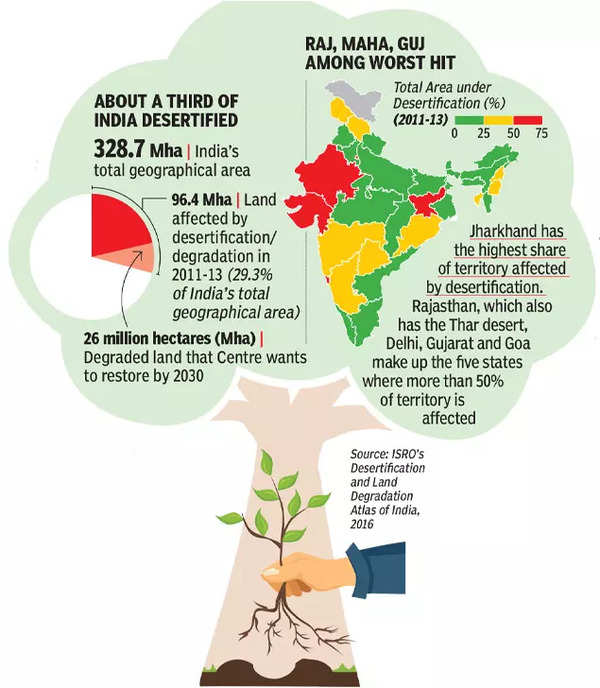If the environment is the gainer when more trees are planted there is an incentive for individuals and various entities and businesses, too, for greening barren patches of land in India. The Green Credit Programme (GCP) launched by the Centre in October last year provides tradable credits for afforestation efforts.

What is GCP And How Is Green Credit Generated?
GCP entails an innovative market-based mechanism for incentivising voluntary environment-positive actions. To begin with, the Union environment ministry has notified the methodology for calculating green credits for tree plantation. One Green Credit will be awarded per tree planted on identified land parcels, subject to a minimum density of 1,100 trees per hectare based on local climatic and soil conditions. Credits will be granted after the state/UT forest department issues a certificate regarding the completion of tree plantation. These credits will be made available for trading on a domestic market platform.
Who Can Take Part?
Individuals, businesses and other entities, including cooperative societies and Farmer Producer Organisations (FPOs), can participate in GCP. The list of participants will eventually be quite broad-based to encourage voluntary adoption of environment-friendly practices.
How Will Tree Plantation Happen?
The forest department of every state and UT will identify degraded land parcels, including open forest, scrubland, wasteland etc. under their administrative control and make these available for tree plantation. The land parcels for plantation must be free of all encumbrances and have a mini- mum size of five hectares.
Any person or entity looking to undertake tree plantation under the Green Credit scheme can apply to an administrator. The Indian Council of Forestry Research and Education (ICFRE) has been designated as the administrator in respect of tree plantation.
Who Will Carry Out Planting Of Trees?
After receiving the application and detailed proposal for tree plantation under GCP, the administrator will issue a demand note to the applicant with the bill for tree plantation and administrative expenses, if any, which have to be paid within a specified pe riod. Once the payment is made, the administrator will direct the forest department to complete the planting of trees within a period of two years from the date of payment.
When Is Credit Generated?
After the planting of trees is completed, the forest department will submit a report to the administrator and issue a certificate of completion to the applicant. The administrator will evaluate and verify the work done and award Green Credits to the applicant based on the total number of trees planted on the assigned land parcel.
How To Use Credits?
Credits can be traded on a designated ‘trading platform’ to be maintained by the administrator. There will be a ‘green credit registry’, or an electronic database for the registration and issuance of Green Credits.
Alternatively, Green Credits may be exchanged for meeting compliance targets for compensatory afforestation in the case of diversion of forest land for non-forestry purposes by businesses. The generated credits can also be used under environmental, social and governance (ESG) leadership indicators or under corporate social responsibility (CSR).
What Are The Other Green Practices To Be Covered Under GCP?
Apart from tree plantation, initiatives for water management (conservation, water harvesting, water-use efficiency and reuse of wastewater), waste management (promoting circularity), sustainable agriculture, air pollution reduction, mangrove conservation and restoration, and sustainable building will be incentivised under GCP. The ministry will eventually come out with methodologies for calculating Green Credits for these activities as well.

